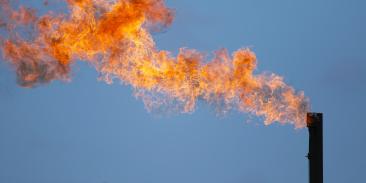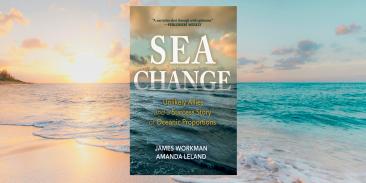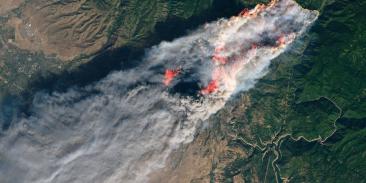‘Last Resort’ State Insurance Can Support Increased Resilience for Policyholders
As state-created insurance becomes the last lifeline for many homeowners in the face of growing extreme event risk, many programs are proactively supporting policyholders in lowering their risk.
Washington D.C.– A new Environmental Defense Fund and Cornell University report shows that as climate change intensifies weather disasters and strains private insurance providers, state-created insurance “markets of last resort” can play a vital role in reducing risk and stabilizing coverage for policyholders.
The report, “Driving Loss Reduction through State-Created Insurance Markets of Last Resort,” comes at a time when private insurers across the United States are increasingly retreating from high-risk areas due to rising risks associated with wildfires, hurricanes, floods and other extreme events. This rising risk leaves state-backed programs to absorb policyholders and growing financial exposure.
Supported by a grant from the David and Patricia Atkinson Foundation to EDF and the Cornell Atkinson Center for Sustainability, the report underscores that these programs were designed to fill gaps in coverage, but many are now facing unsustainable levels of risk serving as the last line of defense for many households. For example, California’s state insurer of last resort, the CA FAIR plan, announced a $1 billion assessment after the massive fires in Los Angeles earlier this year. As of 2023, about 4.3 million American households depend on a public program for their property insurance. That number is growing in many states. In Florida, the residual insurance market across all state programs has grown gradually since 2018, and the CA FAIR plan has grown by more than 200% since 2019.
But these programs can do more than just provide coverage, according to the report. By offering smart incentives like premium discounts, post-disaster upgrades, and home retrofit grants for mitigation measures, states can help protect vulnerable homeowners, help policyholders to reduce risk and bolster the long-term fiscal health of their insurance systems.
“State-created insurance programs play an important role in providing financial protection against escalating extremes, but they are also uniquely positioned to drive down disaster risk,” said Dr. Carolyn Kousky, Associate Vice President for Economics and Policy at EDF and lead author of the report. “We’ve seen that when programs make mitigation easy and cost-effective, people are incentivized to take action. And that has measurable impacts on losses avoided and insurance markets stabilized.”
“Well-designed risk reduction interventions can not only contain insured losses, but reduce costs and difficulties for many households,” said co-author John Aloysius Zinda, Associate Professor of Global Development at the Cornell University College of Agriculture and Life Sciences. “ These measures will be an important part of our risk reduction toolkits, and it is encouraging to see an increasing number of programs making use of them.”
The report draws from interviews, case studies and program data to evaluate the risk reduction programs of residual insurance programs and outlines three approaches that these programs are using to support loss reduction:
- Premium discounts for homes that adopt proven risk-reduction measures, such as wind-resistant construction.
- No-cost policy endorsements that fund stronger rebuilding after disasters.
- Household grants for high-risk homes to retrofit them to more resilient standards.
The report also notes best practices to help states replicate other programs’ success that include focusing on cost-effectiveness, streamlining customer experience, building broad partnerships, and embedding risk reduction into the fabric of the insurance programs.
With the right tools and leadership, states can turn risk into resilience and protect the people and places most vulnerable to disaster.
About Global Development at Cornell
The Department of Global Development in Cornell University’s College of Agriculture and Life Sciences (CALS) aims to advance a more equitable and resilient world by uniting people and ideas across disciplinary and geographical boundaries. Launched in 2020, the Department of Global Development unites critical scholarship and practice through engagement at the intersections of agricultural, environmental, life, and social sciences. Its unique approach harnesses strengths from across CALS and Cornell to advance a more equitable, sustainable, and food-secure world for all.
About College of Agriculture and Life Sciences (CALS) at Cornell University
The College of Agriculture and Life Sciences is a pioneer of purpose-driven science and home to Cornell University’s second-largest population of students, faculty, and staff. We work across disciplines to tackle the challenges of our time through world-renowned research, education, and outreach. The questions we probe and the answers we seek focus on three overlapping concerns: natural and human systems; sustainable agriculture and food systems, energy, and environmental resources; and social, physical, and economic well-being.
With more than 3 million members, Environmental Defense Fund creates transformational solutions to the most serious environmental problems. To do so, EDF links science, economics, law, and innovative private-sector partnerships to turn solutions into action. edf.org
Latest press releases
-
Groups File Lawsuit Challenging Trump EPA Final Rule That Delays Methane Pollution Protections from Oil and Gas Industry
December 4, 2025 -
New Statewide Survey: As Electricity Demand and Costs Skyrocket, Arizonans Support Building More Wind and Solar Energy
December 4, 2025 -
Trump Administration Announces Plan to Weaken Fuel Economy Standards for Cars and Trucks
December 3, 2025 -
Trump EPA Proposal Lowballs Risk of Cancer-causing Formaldehyde
December 3, 2025 -
New York Finalizes Greenhouse Gas Reporting Requirements for Major Polluters
December 2, 2025 -
Canada-Alberta MOU a Disappointing Retreat on Oil & Gas Methane Regulation
November 27, 2025












